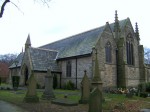eWe love genealogy because of the challenge, the chase, the excitement of finding our lost ancestors, and discovering who they were, what they did and where they lived. In the process of the search, we accumulate numerous documents, files, photographs and notes that we may very have organised very tidily (well…some of us…), with software that helps to collate it all and produce a nice looking tree. But I sometimes wonder what the point of having all this information is unless we have some way of presenting the actual story of our ancestors, some way of telling the ‘what happened’ that will interest and inspire the future generations. How do you go from researching your family history to writing a family history?
If you are a true genealogist, you will have researched beyond the birth/marriage/death details, beyond the census, and tried to find the ‘deeper’ history of your ancestors’ lives. As a professional genealogist, I appreciate that this is not always possible. With the best will in the world, sometimes all we have is date and place of birth, date and place of marriage, occupation, residence and date and place of death. Sometimes not even all of these.
But even if you only have a few basic details, it is possible to construct a life story for each individual ancestor that can be written up and presented, perhaps in a book or a video, perhaps as part of a whole book looking at the lives of each of your ancestors. A book like this would make a wonderful, unique gift for members of your family.
Writing your ancestor’s history is a bit like putting together a jigsaw from all the pieces of research you have done: the whole is greater than the sum of its parts. Suddenly, when you see the story from birth to death, you begin to see the possible why’s and wherefore’s, a character begins to form.
Let us take my own Victorian Bott family as an example. I do not have much information about most of them except for baptisms, census details, marriage certificates and death certificate. They did not leave any wills, own any land, or get into trouble with the law, and I have never found any newspaper stories about them. However, by piecing together the known facts, and by researching background history and using pictorial resources, I have written a biography of my ancestor John Walker Bott, and my late uncle wrote a leaflet about several generations of the Bott family.
Doing some background history research is the key point in getting to know the times your ancestor lived in. A book I find invaluable is the Chronicle of Britain and Ireland which details all the main news items of each year in Britain’s history. Of course, the internet is also full of useful information and pictorial images that you could use to illustrate your story (be careful when using images from the internet – many of them are copyrighted, so you may need permission to use them if you are going to make your work public).
Thus, part of John Walker Bott’s story I have written thus:
When John Walker Bott and his sister were born in 1814, the nation was celebrating the downfall of Napoleon, Jane Austen had just published Mansfield Park, and the actor Edmund Kean had made his debut as Shylock at Drury Lane Theatre.
While these bits of information have nothing to do with my ancestor personally, they set the context for the world into which he was born.
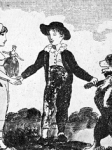 Books about the history of costume or housing are also very useful, and again you can find websites about fashion through the ages, which can help you to get an idea of how your ancestor dressed.
Books about the history of costume or housing are also very useful, and again you can find websites about fashion through the ages, which can help you to get an idea of how your ancestor dressed.
Find out about the history of the places where your ancestors were born and lived, to provide a setting for their lives. Here, I have found out about where John was born and what life was like there:
Newcastle-under-Lyme was an old borough market town situated 2 miles from the River Trent. By the time of JWB’s birth, Newcastle was a well appointed town, with good paving, gas lighting and a supply of good water. It had two churches, the main one being St. Giles where John was later to be married. By the time JWB was 17, the population was just over 8,000 and had grown to 10,000 by 1839. Market  days were Monday and Saturday, and there were five annual fairs… It would have been a very busy and bustling town at this time, lying on the main turnpike road from Liverpool and Manchester to Birmingham and London….
days were Monday and Saturday, and there were five annual fairs… It would have been a very busy and bustling town at this time, lying on the main turnpike road from Liverpool and Manchester to Birmingham and London….
Once you have discovered this kind of information, other things you know about them begin to make sense. I know that John moved to Birmingham some time before 1851, and I also know that Newcastle had become a much quieter town after the arrival of the railways, which bypassed Newcastle, and the decline of the coach trade. He was a builder by trade, and the quickly expanding city of Birmingham must have provided far more work for him than the now quieter town of Newcastle-under-Lyme.
John Walker Bott’s life follows the usual pattern of the head of a Victorian family – the birth of five children, the death of his wife, Louisa, his second marriage two years later and the birth of further children. By following his life through the census, looking at the number of rooms and by researching the addresses, we can see that his fortunes were increasing as the quality of housing improved. He goes from ’employed’ to ’employer’, and at one point we know there were 10 people living in the household, including stepchildren from his 2nd wife’s previous marriage.
If we look at the history of education, we can see that the 1872 Education Act made school compulsory for all children between 5 and 13, so John’s children were likely to have been scholars at the nearby school, next to St. Mark’s Church.
In 1867, John would have been able to vote for the first time in his life when the Second Reform Bill allowed working men with an established place of residence the right to vote.
Here are some of the closing words of John’s story:
John Walker Bott died on 14th August 1874 at the age of 60. For a hard-working man in a physically tough trade this was a good age at this time.
Throughout his life he would have seen many changes as the Victorian age grew and developed. He had lived through the cholera epidemics of the 1830s and 40s. When the young Queen Victoria came to the throne he would have been a young man of 23. He perhaps read the weekly instalments of Charles Dickens’ novels. He experienced the rapid growth and expansion of the railways, and would have known about the Great Exhibition in London in 1851. Did he, like many others, travel by train to visit this amazing international exhibition?
It was an exciting time to live in and John Walker Bott was part of it, and benefitted from it. He had prospered and produced a family – an ideal Victorian working man.
I hope you can see how I have used background history to set the context in which my ancestor lived. These are all things he would have known about and probably experienced. We don’t have to be limited in our knowledge of our ancestors merely to a few dates and place names. By doing some general and local history research, we can get a real picture of a life, and some sense of what it was like to live in the places and times our ancestors lived in.
You can also make educated guesses at the reasons why your ancestor moved, changed career etc. But it is very important that when writing our histories we clearly delineate between what is absolute fact and what is conjecture. Always state your guesswork as a possibility or probability, and when giving facts you should mention where the fact comes from (e.g. baptism record).
Writing a family history therefore does not have to be just a chronological list of personal events. It can be enriched with all the information you can find that would have touched the lives of your family.
Here are a few resources that can help you write up your family history:
- Maps: Google Earth, Streetview or Streetmap are great internet resources for finding out whether the street or house still exists and looking at local landmarks. You should also search for any old maps that were drawn when your ancestors lived there.
- Local museums. These can give you a great insight into local life, including local trades and industries.
- Local churches. As well as gravestones, many churches produce leaflets about the history of the parish.
- Local libraries and bookshops. You will usually find books about the local area here.
- Tourist or council websites. These often give you good histories about the towns or villages.
- History of Costume and Fashion websites and books
- Wikipedia. This is a good source of information, and many of the historical pictures used are out of copyright and available for public use (always check first).
If you don’t have a good knowledge of general history, or you doubt your writing skills, I do provide an ancestral biography service and can write up your family history for you. See my Writing Services Page for more info or email me for more details at info@tracingancestors-uk.com.
If you have British genealogy but you don’t live in the UK, then you have probably used the internet to carry out your family history research at least back to the early 19th century. Perhaps you have taken out a subscription to websites such as Ancestry.co.uk
or Find My Past to search for census records, births, marriages and deaths and other documents that are available online. You may even have found that someone else researching your family line has published a tree online.




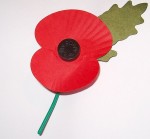

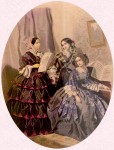
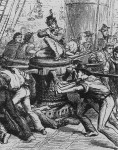
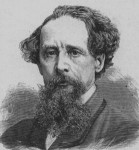
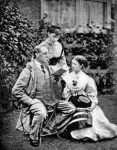
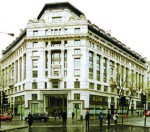

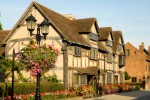
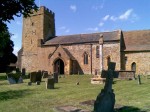
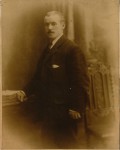
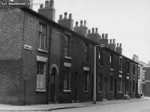 He was born in Clifford Street, Openshaw, Manchester, on 31st May 1865, the son of John McEwen, a labourer in the iron works, and Jane Stickney (the granddaughter of an American ship-wright and mariner – but that’s another story…). On looking at old maps, I can see that there were several iron foundries and iron works in this area, as well as railway works. They were still living in the same street in 1871, and two of Francis’s older brothers worked on the railways. This street no longer exists but I imagine they were similar to the terraced houses shown on the left.
He was born in Clifford Street, Openshaw, Manchester, on 31st May 1865, the son of John McEwen, a labourer in the iron works, and Jane Stickney (the granddaughter of an American ship-wright and mariner – but that’s another story…). On looking at old maps, I can see that there were several iron foundries and iron works in this area, as well as railway works. They were still living in the same street in 1871, and two of Francis’s older brothers worked on the railways. This street no longer exists but I imagine they were similar to the terraced houses shown on the left.